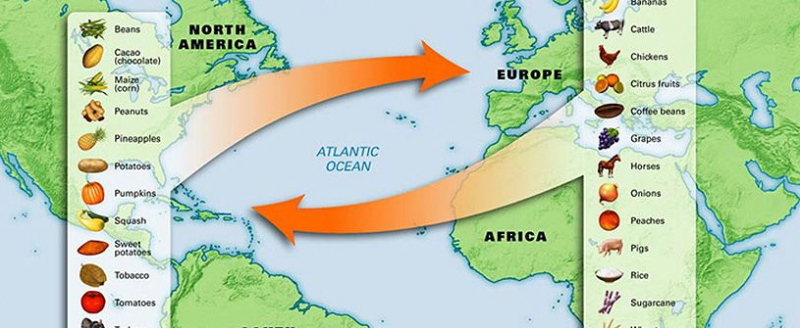Many plants and animals were brought to the Old and New Worlds as a result of the Columbian Exchange.
Before the Columbian Exchange, Florida had no oranges, Ecuador had no bananas, Italy had no tomatoes, Colombia had no coffee, Hawaii had no pineapples, Texas had no cattle, India had no chili peppers, France had no cigarettes, Switzerland had no chocolate, and Ireland had no potatoes. Many plants and animals were brought to the Old and New Worlds as a result of the Columbian Exchange. Potato, tomato, maize, cocoa, and tobacco were all brought to the Old World. Rice, wheat, apples, bananas, and coffee are among the crops imported to the New World.
Unlike plants, which had a significant impact on other regions of the planet, American animals had very little impact. The turkey was one tamed animal that had considerably more impact. The only notable New World domesticated animals imported to the Old World are the turkey and the llama. Meanwhile, many animals were brought to the New World from the Old World such as horses, cows, chickens, donkeys, and pigs. These animals, particularly pigs, which multiply fast, increased the food supply in the Americas. Oxen also assisted in the cultivation of greater land. The New World rarely suffered from starvation since there was plenty of meat and enormous amounts of land for cultivation and pasture. Before the arrival of the horse in the Americas, the majority of tribes relied on llamas to transport their products. Native Americans were able to hunt on horseback and live a more nomadic lifestyle as a result of the horse. The horse transformed Native American existence by allowing tribes to hunt buffalo and bison more efficiently.
The abundance of food was the fundamental cause of the enormous influx of Europeans to the Americas. Without the Columbian Exchange, activities like cattle ranching and coffee production would be impossible. This is one of the interesting facts about the Columbian Exchange.






